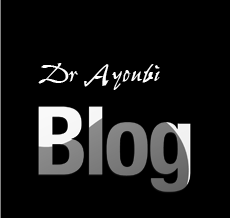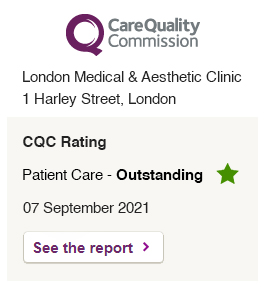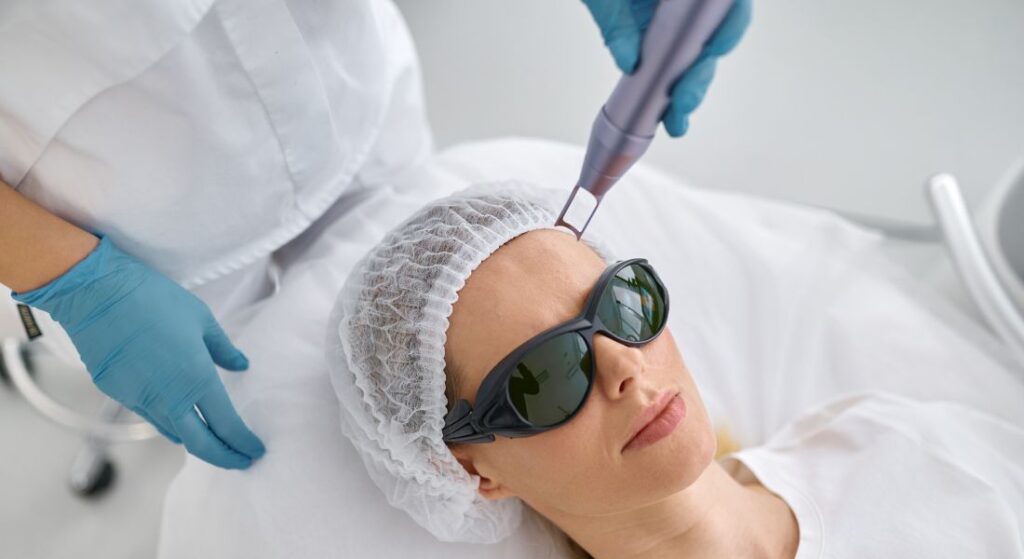
If you’ve just had CO2 laser resurfacing, you’re probably excited to see your results. At the same time, you might be wondering how to get through the healing process as quickly and comfortably as possible. While recovery takes time, the right aftercare can make a big difference in how your skin heals and how your final results look.
In this guide, I’ll walk you through everything you need to know about speeding up CO2 laser healing. From the right skincare routine to lifestyle adjustments and follow-up care, these practical tips will help you recover more smoothly and enjoy the full benefits of your treatment.
Understanding CO2 Laser Healing
Before diving into recovery tips, it helps to know what’s happening in your skin.
CO2 laser resurfacing works by removing damaged layers of skin and stimulating new collagen production. This controlled injury kick-starts your skin’s natural healing process, leading to smoother texture, fewer lines, and improved tone.
Healing involves several stages:
– Redness and swelling (first few days).
– Peeling and crusting (first 1–2 weeks).
– Gradual fading of redness (up to 2–3 months).
Since the treatment is designed to trigger regeneration, the recovery process is essential. How you care for your skin during this time directly impacts your results.
Factors That Affect How Quickly You Heal
It’s important to remember that not everyone’s skin heals at the same speed, and that’s completely normal. There are several factors that can influence how quickly your skin bounces back after a procedure, and understanding them can help you manage your expectations and take better care of yourself.
One of the biggest factors is the depth and intensity of the laser treatment you had. If your treatment was more superficial, your skin might recover fairly quickly, sometimes in just a few days. But if the procedure went deeper, it’s natural for the healing process to take longer. Don’t be alarmed if your friend seems healed faster than you; everyone’s skin and treatment are unique.
Your age and overall skin health also play a major role. Younger skin generally regenerates more quickly, while more mature skin may take a bit longer to repair itself. That said, even if you’re not in your twenties anymore, there are ways to support your skin so it heals as efficiently as possible.
Another important factor is your skincare routine and aftercare. How you treat your skin after treatment can make a big difference. Following the recommended aftercare, using soothing products, and avoiding harsh ingredients can prevent unnecessary delays and even complications. Think of it as giving your skin the best possible environment to recover.
Lifestyle habits are also key. Smoking, excessive alcohol consumption, and a diet lacking in essential nutrients can all slow down your healing. On the flip side, staying hydrated, eating a balanced diet, and getting enough rest can significantly boost your skin’s recovery speed.
Practical Tips for Faster CO2 Laser Healing
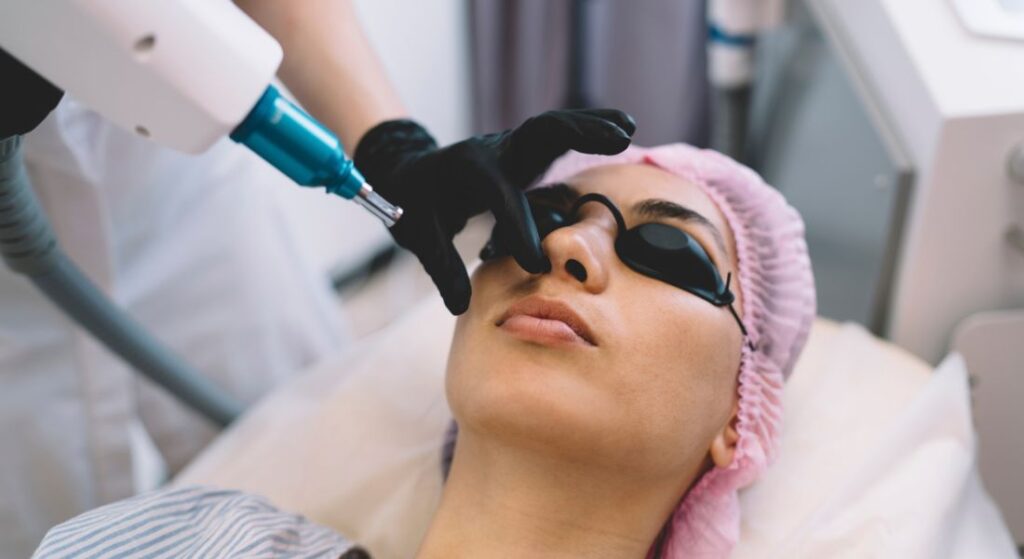
Let’s break down the best steps you can take to heal more quickly after CO2 laser resurfacing.
Follow Your Doctor’s Instructions Carefully
If there’s one thing that truly makes a difference in how well and how quickly your skin heals, it’s following your doctor’s aftercare instructions to the letter. Think of your provider’s guidelines as a roadmap for your recovery every step is designed specifically for your skin type, the treatment you received, and how deep the procedure went. Skipping a step or improvising can increase your risk of complications like infections, scarring, or prolonged redness, which nobody wants.
Even if some of the instructions seem obvious or overly cautious, it’s worth sticking with them. For example, applying creams at the right intervals, avoiding direct sun exposure, and keeping your skin clean might feel tedious, but these small steps have a big impact on your overall healing process.
And never hesitate to ask questions. No concern is too minor when it comes to your skin’s recovery. Whether it’s about a sensation that feels unusual, how often to apply a product, or what activities are safe, checking in with your provider can give you peace of mind and help you avoid setbacks. After all, your doctor’s advice is tailored to you, not a generic guideline, so leaning on their expertise is always in your best interest.
Keep Your Skin Clean but Gentle
In the first few days after your treatment, your skin is going to be especially sensitive and vulnerable. This is the time when it needs the most care, so treating it gently can make a big difference in how quickly and smoothly it heals.
When cleansing, stick to lukewarm water and a mild, fragrance-free cleanser. Hot water or harsh products can irritate your skin and slow down recovery. Think of your skin as a delicate surface that’s just undergone a mini procedure it needs to be soothed, not scrubbed.
After washing, pat your skin dry with a soft towel instead of rubbing. Even a little friction can inflame the area or cause tiny micro-tears, which can lead to complications or prolonged redness.
It’s also important to avoid scrubbing, exfoliating, or using active treatments like retinoids or acids until your doctor gives you the green light. As tempting as it might be to get back to your regular routine, your skin is still in recovery mode, and patience now will pay off in the long run.
Keeping your skin clean in this gentle, mindful way doesn’t just prevent infection it also creates the ideal environment for your skin to repair itself efficiently. By treating your skin with care, you’re helping it heal beautifully, faster, and with minimal risk of setbacks.
Use the Right Moisturiser
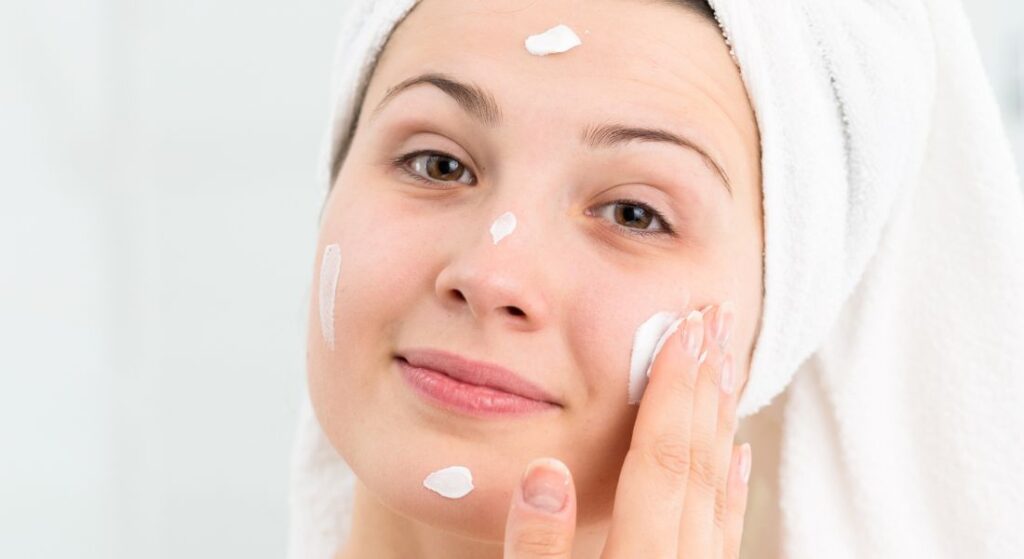
Keeping your skin well-hydrated is absolutely essential after laser treatment. Hydration isn’t just about comfort it actively supports your skin’s healing process, helping to reduce redness, prevent cracking, and promote faster recovery.
Your doctor will often recommend a specific healing ointment or a bland, fragrance-free emollient. These products are formulated to protect your skin without causing irritation. Applying them regularly is key think of it like giving your skin a constant shield while it repairs itself.
It’s equally important to avoid certain ingredients during the early stages of healing. Products that contain alcohol, fragrances, or active ingredients such as retinoids or strong acids can irritate your sensitive skin and slow down the recovery process. Even if your usual skincare routine includes these, now is the time to pause them until your skin has fully healed.
Protect Against Infection
After your laser treatment, your skin is in a delicate state and more prone to infection, especially during the first one to two weeks. This is a critical time when extra care can make a big difference in how smoothly your recovery goes.
If your doctor has prescribed antibiotic ointments or creams, make sure to use them exactly as directed. These products aren’t optional they actively help prevent infection and support the healing process. Skipping doses or applying them inconsistently can increase your risk of complications.
You should also be mindful of your hands and hygiene. Keep your hands clean and avoid touching your face unnecessarily. Even a quick touch can introduce bacteria to your healing skin. Similarly, changing pillowcases, towels, and anything that comes into direct contact with your face frequently can reduce exposure to germs and keep your recovery on track.
Don’t Pick or Scratch
As your skin peels and crusts, it’s tempting to pick. But doing so can delay healing and leave scars.
– Let flakes shed naturally.
– Keep nails short to avoid accidental scratching.
– If itching is bothersome, ask your doctor about safe soothing creams.
Patience pays off interfering only sets back your recovery.
Stay Out of the Sun
Sun exposure is one of the biggest risks during healing.
– Avoid direct sunlight until your skin has fully recovered.
– Wear a wide-brimmed hat and sunglasses outdoors.
– Once your doctor allows, use a broad-spectrum SPF 30 or higher daily.
Protecting your skin prevents hyperpigmentation and helps results last longer.
Eat for Skin Healing
What you eat plays a role in how quickly your skin regenerates.
Protein: Supports new tissue formation.
Vitamin C: Helps collagen production.
Zinc: Aids wound healing.
Hydration: Drink plenty of water to keep skin supple.
Think of food as part of your treatment fuel your body for faster recovery.
Avoid Smoking and Alcohol
What you put into your body can have a big impact on how quickly your skin heals. Smoking, for example, reduces blood flow and limits the oxygen your skin needs to repair itself. That means your recovery can take longer, and your results may not be as smooth or even as they could be.
Similarly, alcohol can dehydrate your skin, stripping it of essential moisture and slowing down the natural healing process. Even a single night of drinking can leave your skin looking dull and feeling irritated, which isn’t ideal when it’s already sensitive from treatment.
If you can, try to avoid smoking entirely and limit alcohol at least during your recovery period. Think of it as giving your skin the best possible environment to bounce back quickly. By making these small but impactful lifestyle choices, you’re helping your skin heal more efficiently, reducing risks of complications, and supporting the long-term health and appearance of your skin.
Sleep Well and Manage Stress
Your body heals best when rested.
– Aim for 7–9 hours of quality sleep each night.
– Sleep with your head slightly elevated to reduce swelling.
– Try relaxation techniques like meditation to keep stress levels low.
Healing isn’t just about products your overall health matters too.
Use Cold Compresses for Swelling
If your skin feels hot or swollen after the procedure, cold compresses can help.
– Use clean, soft cloths dampened with cool water.
– Apply for short intervals, not directly with ice.
– Always follow your doctor’s instructions on timing.
This simple step can make you more comfortable while reducing inflammation.
What Not to Do After a CO2 Laser
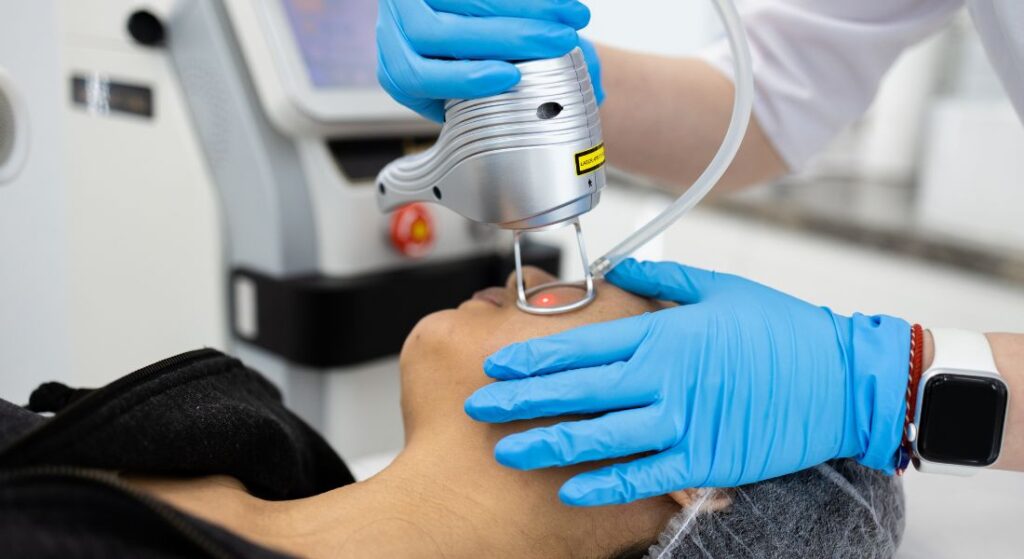
Knowing how to care for your skin after a CO2 laser isn’t just about what you should do it’s equally about what you should avoid. Steering clear of certain activities and products can prevent setbacks and help your skin heal as quickly and safely as possible.
For starters, avoid active skincare ingredients like retinoids, acids, and vitamin C until your doctor gives you the go-ahead. These ingredients can irritate your freshly treated skin and interfere with the healing process. Even if they’re part of your regular routine, it’s best to pause them temporarily.
Heavy makeup is another no-go. Applying thick foundations or powders before your skin barrier has fully recovered can trap bacteria and slow healing, potentially causing breakouts or irritation. If you want to wear makeup, stick to very light, non-irritating products only when your doctor approves.
You should also avoid exposing your skin to heat from sources like saunas, steam rooms, or hot baths. Heat can increase inflammation and redness, making your recovery longer and more uncomfortable. Instead, opt for lukewarm showers and gentle environments.
Finally, hold off on strenuous workouts until your doctor advises it’s safe. Sweating excessively too soon can irritate your skin and increase the risk of infection. Light movement like gentle walks is fine, but save the heavy exercise for later.
Timeline of Healing: What to Expect
Knowing what to expect during your recovery can make the healing process feel a lot less stressful. While everyone’s skin heals at a slightly different pace, there’s a general guide to help you understand what’s normal and when to be patient.
First few days: Right after your CO2 laser treatment, you may notice redness, swelling, and possibly some oozing or crusting. This is completely normal—your skin is essentially repairing itself from the controlled injury the laser created. It might feel a little tender, which is your skin’s way of telling you to take it easy.
First week or so: Around this time, peeling often begins, and your skin may feel tight, dry, or flaky. This is when the old, treated skin is shedding to make way for fresh, new skin underneath. Keeping your skin moisturised and following aftercare instructions is especially important during this stage.
First couple of weeks: You may start to see new pink skin emerging, and the redness will gradually start to reduce. Your skin might still feel sensitive, but it’s showing signs of healing and regeneration.
Within the first month: The redness continues to fade, and your skin begins to look more like its normal self. Any residual peeling should have mostly stopped, and your skin texture is becoming smoother.
Over the next few months: Your skin tone gradually evens out, and the full results of your treatment become clearer. By this stage, most of the redness has subsided, and you’ll start to see the lasting improvements from the laser procedure.
Combining Treatments for Better Results
In some cases, your doctor may recommend combining CO2 laser with other treatments to enhance both healing and results. Treatments like microneedling, PRP (platelet-rich plasma), or polynucleotides can work alongside the laser to stimulate collagen, improve skin texture, and even help your skin recover more comfortably.
These combination approaches can sometimes reduce downtime and give your skin a rejuvenated appearance faster than a single treatment alone. That said, it’s important to remember that everyone’s skin responds differently. What works well for one person might not be ideal for another.
Before considering any combination therapy, always discuss it with your specialist. They can assess your skin, review your medical history, and design a plan that’s safe, effective, and tailored specifically to your needs. By working closely with your provider, you can maximise results while keeping your recovery smooth and complication-free.
When to Call Your Doctor
It’s normal to experience some redness, swelling, and peeling after your CO2 laser treatment, but there are certain signs that shouldn’t be ignored. Paying attention to your skin and acting quickly can prevent minor issues from turning into bigger problems.
You should call your clinic immediately if you notice severe pain or swelling that doesn’t improve with time or your prescribed care. This could indicate that your skin is reacting more than expected.
Another warning sign is yellow discharge, pus, or other indications of infection. Even a small infection can escalate quickly, so contacting your doctor promptly ensures it’s treated safely.
If you see worsening redness after the first week, or if the treated area develops scarring or unusual pigmentation, it’s also important to get checked. Early intervention can make a big difference in managing these complications and protecting your final results.
Remember, your doctor expects questions and calls no concern is too small when it comes to your skin’s recovery. Being proactive helps you heal safely, confidently, and with the best possible outcome.
Long-Term Care After CO2 Laser
Even once your skin has fully healed, your journey isn’t over how you care for your skin afterward plays a big role in maintaining and enhancing your results. Establishing good long-term habits ensures your skin stays healthy, smooth, and radiant for months and years to come.
First, stick to a gentle but effective skincare routine. Your skin has just undergone significant resurfacing, so it benefits from products that nourish and protect without causing irritation. Focus on mild cleansers, hydrating moisturisers, and barrier-supporting ingredients.
Sun protection is absolutely essential. Daily use of broad-spectrum sunscreen shields your fresh skin from UV damage, helps prevent pigmentation changes, and preserves the results of your laser treatment. Even short periods in the sun can have an impact, so make sunscreen a non-negotiable part of your routine.
Your doctor may also recommend periodic maintenance treatments to help sustain the benefits of your CO2 laser. These could include gentle resurfacing sessions, microneedling, or other rejuvenating therapies. Following your provider’s advice ensures that your skin continues to look its best over time.
By committing to consistent, mindful long-term care, you’re not just protecting your skin you’re enhancing your results, keeping your complexion vibrant, and enjoying the full benefits of your CO2 laser treatment well into the future.
FAQs:
1. How long does it take to fully recover from a CO2 laser?
Healing depends on how deep your treatment was and your skin type. Initial recovery, such as redness, swelling, and peeling, often takes about 1–2 weeks, while any lingering redness may gradually fade over the following 2–3 months. Deep treatments may take longer, but following proper aftercare can speed up recovery and minimise complications.
2. Can I go back to work immediately after treatment?
This depends on the intensity of your CO2 laser session. For superficial treatments, some people feel comfortable returning to work after a few days, using gentle makeup once cleared by their doctor. For deeper resurfacing, it’s common to take 1–2 weeks off to allow for peeling and redness to subside. Always plan your schedule around your expected recovery and follow your doctor’s guidance.
3. Is it normal to have swelling and redness?
Yes, swelling and redness are a normal part of the healing process. They usually peak within the first 1–3 days and gradually decrease over the next few weeks. Persistent or worsening redness beyond the first week may require a check-up, as it could indicate irritation or infection.
4. When can I wear makeup again?
You should avoid heavy makeup until your skin barrier has fully healed, which is usually around 1–2 weeks for most treatments. If you feel the need to cover mild redness after this period, use light, non-comedogenic products approved by your doctor to avoid irritation or clogged pores.
5. Can I exercise during recovery?
Strenuous exercise should be avoided until your doctor confirms it’s safe, typically for the first 1–2 weeks. Sweating too early can irritate your skin and increase the risk of infection. Gentle walks and light stretching are generally fine, but high-intensity workouts are best postponed.
6. How can I minimise the risk of scarring or pigmentation?
The key is to follow aftercare diligently. Keep your skin clean, moisturised, and protected from the sun. Avoid picking or scratching, and use a broad-spectrum sunscreen (SPF 30 or higher) daily once your skin allows. Staying hydrated and avoiding smoking also supports healthy skin regeneration.
7. Do I need additional treatments after CO2 laser?
Some people benefit from combination or maintenance treatments like microneedling, PRP, or polynucleotides. These can boost collagen, improve texture, and sometimes reduce downtime. Your doctor will assess whether these treatments are suitable for your skin type and goals.
8. What foods or supplements can help my skin heal faster?
Nutrition plays an important role in recovery. Protein supports tissue repair, vitamin C aids collagen production, zinc promotes wound healing, and staying hydrated keeps skin supple. Eating a balanced diet rich in fruits, vegetables, lean protein, and healthy fats can make a noticeable difference in healing speed.
9. When should I contact my doctor during recovery?
Call your doctor immediately if you notice severe pain, swelling, yellow discharge, or signs of infection, or if you experience worsening redness, scarring, or unusual pigmentation. Prompt attention can prevent minor issues from becoming serious complications.
10. How do I maintain results long-term?
Even after your skin has healed, consistent skincare and sun protection are essential. Stick to a gentle routine, apply sunscreen daily, and consider periodic maintenance treatments if recommended. These habits help preserve the results of your CO2 laser, keeping your skin healthy, smooth, and radiant for years.
Final Thoughts: Healing Well After CO2 Laser
CO2 laser resurfacing is a highly effective way to rejuvenate your skin, improving texture, tone, and firmness. While the healing process requires patience, following proper aftercare, maintaining healthy lifestyle habits, and protecting your skin can significantly speed up recovery and enhance your results. Understanding what to expect and knowing when to seek professional guidance ensures a safer, smoother healing journey.
If you’re considering CO2 laser treatment in London, London Medical & Aesthetic Clinic offers expert care under Dr Ayham Al-Ayoubi. From personalised consultation to post-treatment guidance, you’ll benefit from a tailored approach that helps you achieve natural, long-lasting results while minimising downtime and complications.
References:
1. Levy, T. (2024). ‘Expert Consensus on Clinical Recommendations for Fractional CO₂ Laser’, Lasers in Surgery and Medicine. Available at: https://pubmed.ncbi.nlm.nih.gov/39434507/
2. Haykal, D. (2024). ‘Advancements in Laser Technologies for Skin Rejuvenation’, Journal of Cosmetic Dermatology. Available at: https://onlinelibrary.wiley.com/doi/10.1111/jocd.16514
3. Guo, H. (2023). ‘Dynamic Panoramic Presentation of Skin Function After Fractional CO₂ Laser’, ScienceDirect. Available at: https://www.sciencedirect.com/science/article/pii/S258900422301636X
4. Piccolo, D. (2024). ‘A Faster CO₂ Fractional Scanner System Mode for Skin Rejuvenation’, PubMed Central. Available at: https://pmc.ncbi.nlm.nih.gov/articles/PMC11335465/
5. Wiinberg, M. (2024). ‘Ablative Fractional CO₂ Laser Treatment Promotes Wound Healing Phenotype in Skin’, Lasers in Surgery and Medicine. Available at: https://onlinelibrary.wiley.com/doi/full/10.1002/lsm.23772

